Since the beginning of the war, the Military Medical Clinical Center of Northern Region, or simply put, the Kharkiv Hospital has received about 4,000 wounded soldiers and provided assistance to 6,000 soldiers with combat injuries. In general, about 26,000 servicemen and women delivered from the combat zone have undergone treatment in this medical facility.
The war still changed dramatically the hospital, which should always be ready for the massive admission of patients. Doctors, who used to travel to flashpoint areas as part of peacekeeping missions to gain some experience, now themselves can train their colleagues abroad. Chief of the Kharkiv Hospital’s surgical clinic Serhiy Shypilov told Ukrinform about bullet wounds sewed up with grass inside, lack of equipment and personnel in 2014 and the use of advanced technologies.
EVERYBODY LEARNT FROM BITTER EXPERIENCE
- Serhiy, of course, the wounded and injured are the most difficult category of patients. When the war began, was the hospital ready to receive them?
- The first period of the anti-terrorist operation in eastern Ukraine was complicated by the fact that we received both patients already given some kind of medical care and those who were simply delivered from the battlefield and transported to Kharkiv. But the assistance provided at earlier stages did not always meet the necessary requirements. It was provided either by doctors of ordinary district hospitals closest to the ATO area, or our mobilized doctors, who, unfortunately, had no experience in treating battle injuries.
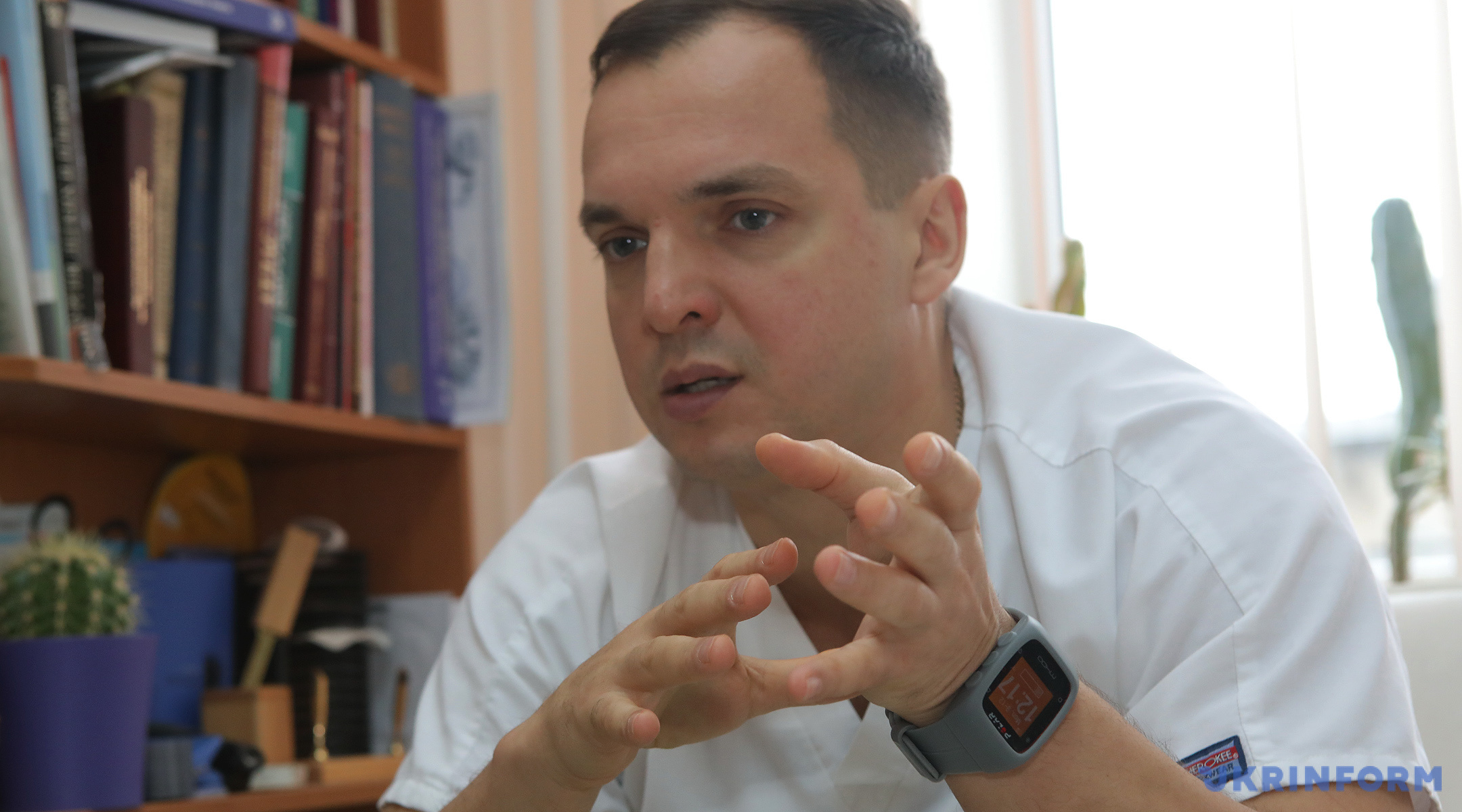
- They did what they could and how they could?
- Gunshot wounds must not be sewed up. And this is what they did at the front at the very beginning. Some soldiers were delivered to us with their wounds sewed up, so we had to cut open those wounds and sometimes we found grass, earth, and elements of clothing inside... And you can’t blame people, you see... When we came to Izium [a town in Kharkiv region bordering Donetsk region, the wounded from the front were brought to a local hospital] in May 2014 and I operated on the soldiers with grievous abdominal wounds, I said: "Let's wash." I was given a 200-gram bottle, while I needed 15 liters of the solution! But the hospital did not have that! That is, the assistance to the wounded was provided only to the extent it could be provided. We had to re-operate almost all patients, who were delivered at the beginning of the war, as the level of primary care was insufficient to prevent further complications.
- Such a bitter experience.
- We tried to revive the knowledge of wound surgery very quickly, with the help of our military officers who served in Afghanistan and other flashpoint areas. And we lacked equipment. In particular, the clinic that I headed, which deals with the treatment of chest and abdominal injuries, did not have enough equipment for minimally invasive intervention which would allow us identifying the pathology quickly and deciding on its treatment.
MASSIVE ADMISSIONS WERE MOST DIFFICULT
- What was the biggest influx of patients during the battles, when there were the biggest losses?
- The most difficult thing in military surgery which civilian medicine lacks is the massive admissions. Svitlodarsk arc, Ilovaisk, battles for Luhansk. Up to 160 people were admitted a day. One day, we admitted 174 at a time. They were delivered, got unloaded. There were people in different conditions... Holding machine guns, weapons. The main and the most difficult task was to determine the order of priority of assistance. The span from July 2014 to February 2015 was the most difficult one. There were periods when doctors did not go home for 3-5 days in a row, they worked around the clock with short snack breaks for some half an hour, just to take a breath. In addition, there was a huge documentary load. After all, we should describe everything, fill out medical records, because people had to be transported further. It happened that we operated all night long and the delivery of a new group of the wounded was scheduled for 9 a.m., so we had to prepare the medical records and all necessary documents until that time.
And the hospital staff was still involved in the forward team, close to the combat zone. That is, certain surgeons, anesthesiologists, or nurses were missing. But we pulled through. The Military Medical Academy sent doctors for rotation every week. Kharkiv civilian doctors, emergency services, volunteers helped actively. We were quick on the uptake and adjusted the necessary level of assistance. Most patients delivered from us to the next stage of treatment were not re-operated.
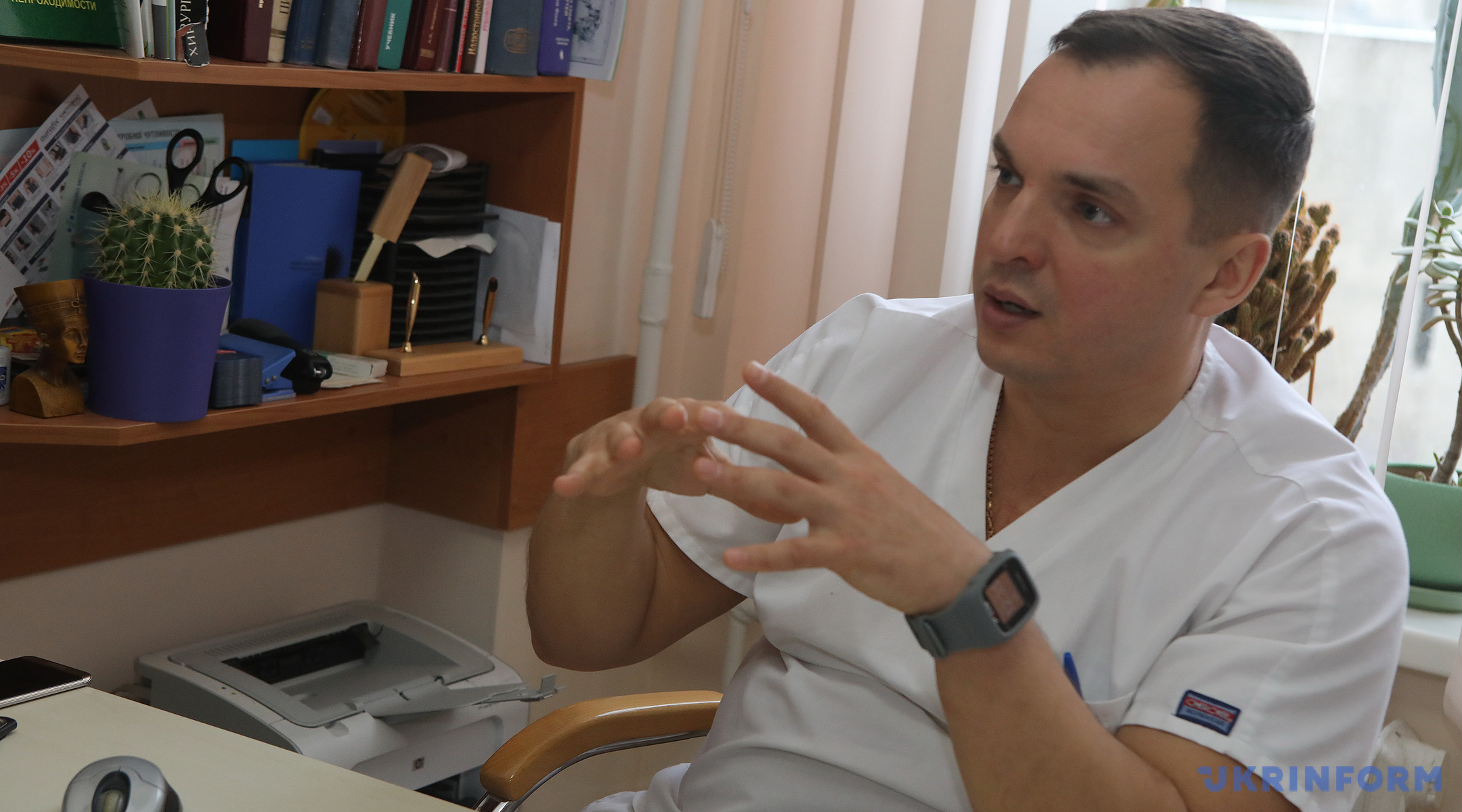
- Now there are not so many wounded.
- Fortunately. And now we try to carry out planned evacuation according to the area of expertise. For example, the Lviv Center specializes in neurosurgery, because they have a good rehabilitation center there. That is, our hospital provides assistance and then, on the 3rd, 5th, 10th day, sends further. The Main Military Clinical Hospital in Kyiv specializes in chest and abdominal injuries. Odesa hospital specializes in eye injuries. Being the hospital located in the closest proximity to the Joint Forces Operation area, we must be ready to receive 10-15 seriously wounded people every day, therefore, we have no right to “accumulate” patients, so to speak.
VACUUM DRESSINGS AND MAGNETICALLY DRIVEN MEDICAL DEVICES
- You said that you quickly introduced endoscopy techniques, so did the new equipment appear?
- In 2016, the Government of Japan presented the hospital with a wonderful endoscopy tower. It has good capacities and helps us a lot. And recently, we have received two new endoscopy towers purchased at public expense. One of them is used for the treatment of chest and abdominal organs, the second – for the treatment of major joints. We will be able to provide even better assistance, improve diagnostics as it is Full HD equipment allowing us to examine organs in detail, to identify all possible damage, fragments. And not only to identify but also to remove them through minimally invasive techniques, without making large incisions which significantly complicate the postoperative period for severe combat injuries. We also needed X-ray equipment to detect foreign bodies – and we got it. This is the so-called electron-optical converter, which in real time helps us to reach foreign bodies and remove them.
- Back in 2016, the hospital surgeons showed the media magnetically driven devices that can remove almost all the fragments. Probably, they are already being used in other hospitals?
- According to my information, other countries are already buying certificates in order to produce and use them in their medical facilities because it is cutting-edge technology. Of course, magnetically driven devices existed before. But my colleagues, one of them is Doctor of Medicine Volodymyr Nehoduyko who now heads our emergency clinic, significantly improved these devices. Size, shape, special systems for capturing these fragments – we have made much progress in the treatment of gunshot wounds. Now we remove fragments from the lungs, diaphragm, mediastinum, liver, intestines, retroperitoneal space. If the standards allow, we use endoscopy and these magnetically driven devices.
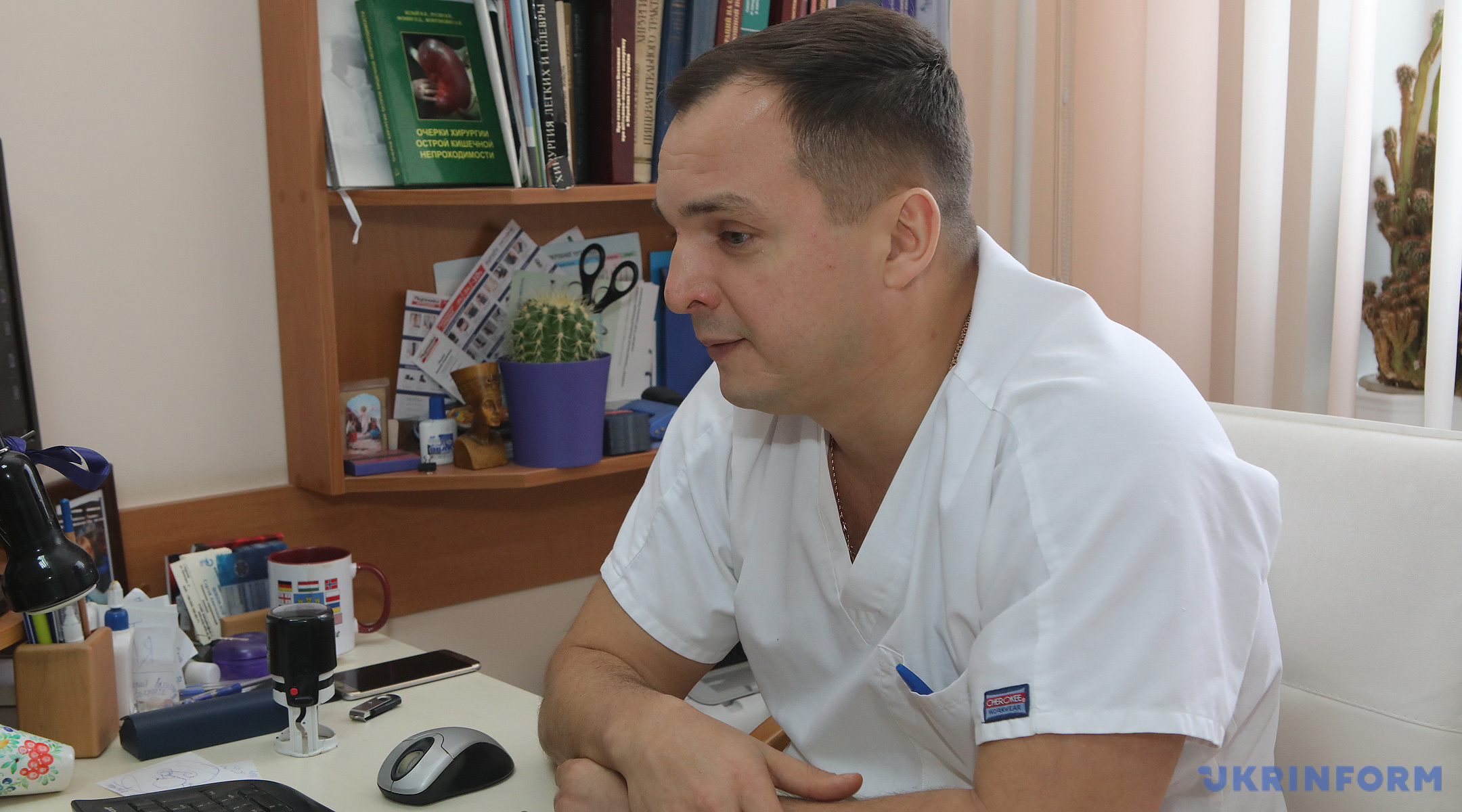
- What other advanced technologies do you use?
- We actively apply such a technique for wound treatment as vacuum therapy. This technique practically had not existed in Ukraine before the war started. Since the equipment and supplies were expensive, the use was limited. Of course, we knew about this technique. At first, we asked volunteers to help with the purchase of equipment, the so-called vacuum aspirators, and later began to buy this equipment centrally.
- What is the essence of this therapy?
- It speeds up the healing process of large wounds several-fold. A special dressing is applied to A wound, it can be called a “sponge”, it is impregnated with a certain antibacterial solution. A vacuum aspirator is connected to this “sponge” and removes everything that is produced by the wound. If you have such a vacuum dressing, no other dressings are needed, and the edges of the wound come together on their own. One such dressing is applied for up to five days. In general, up to five sessions are enough for a wound to be virtually ready for being sewed up.
- Have you mastered any other techniques?
- Our colleague passed doctoral thesis on arthroscopy [minimally invasive surgical procedure on a joint in which an examination and sometimes treatment of damage is performed]. This is a very promising technique. Not only does it allow you to specificate all the damages occurring during injuries, and there are a lot of injuries, especially related to knee and shoulder joints, but also to remove fragments from penetrating wounds.
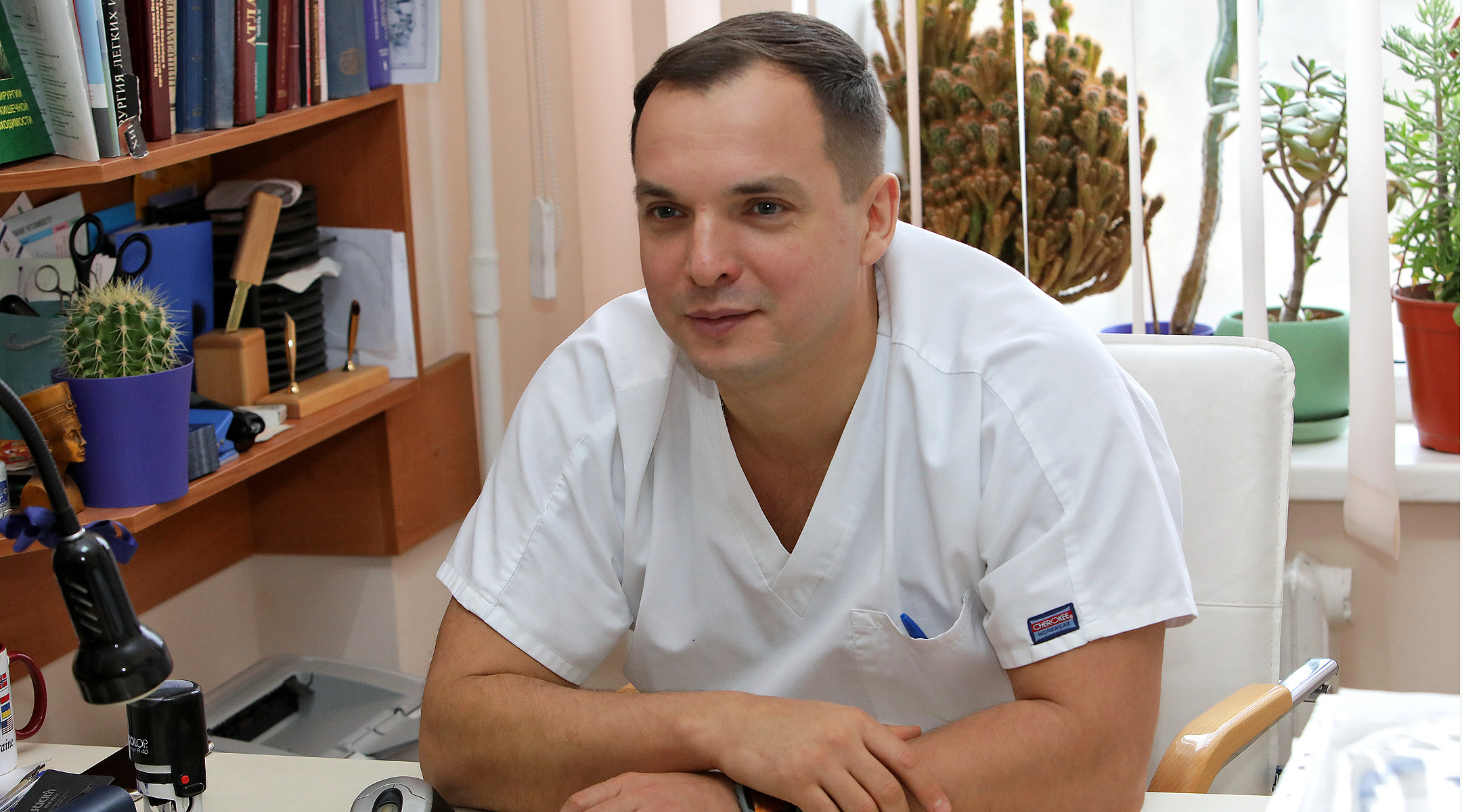
NEW DEPARTMENTS OPENED
- That is, the war brought the provision of assistance to a completely different level?
- Yes, it did. In 2015, new departments opened in our hospital. One of the most serious injuries are vascular pathology, damage to large vessels, therefore, a separate department was created. We mastered – first, with the help of the city’s leading specialists and then on our own – all the techniques that allow treating vascular damage and, most importantly, saving the limbs. Annually, about 15-20 patients with vascular damages undergo treatment in our hospital. The damages were successfully sewed in or prosthetized, but the limbs were preserved. A neurosurgical department also appeared. During the war, a lot of patients with head and spinal cord injuries have been received. Probably, if you count all the gunshot wounds in Ukraine, our hospital has performed more surgeries than other hospitals across the country in total over the past five years... This is a category of very serious patients.
- Departments were created as the pressing need arose. But you had to fill them with specialists. How did you manage to solve the personnel issue?
- The personnel were formed from doctors who specialized in general surgery, graduated from the military medical academy. They completed the corresponding specialized training additionally. Of course, we have invited specialists from leading Kharkiv institutions as the need requires, including the Zaitsev Institute of General and Emergency Surgery, the Sytenko Institute of Spine and Joint Pathology, the Scientific and Research Institute of Prosthetics, the Hryhoryev Radiation Medicine Institute. For example, for all the time we’ve had 12 patients with pericardial and cardiac injuries. Of course, such patients needed highly specialized care, the use of an artificial blood circulation apparatus, so they were immediately sent to the Zaitsev Institute. The patients with spinal cord injuries were sent to the Sytenko Institute, and its leading specialists and the head physician have been actively involved in the treatment.
Yes, the new departments were filled with personnel that had been formed during the war, but some of our specialists already give lectures in Europe on gunshot wounds of various organs, especially wounds received by the military as a result of using high-powered weapons, bombs, mortar shells, including from Grad and Uragan multiple rocket launcher systems. European surgeons have no idea what injuries are inflicted by debris having such tremendous kinetic energy. Therefore, we share this information and conduct active scientific research.
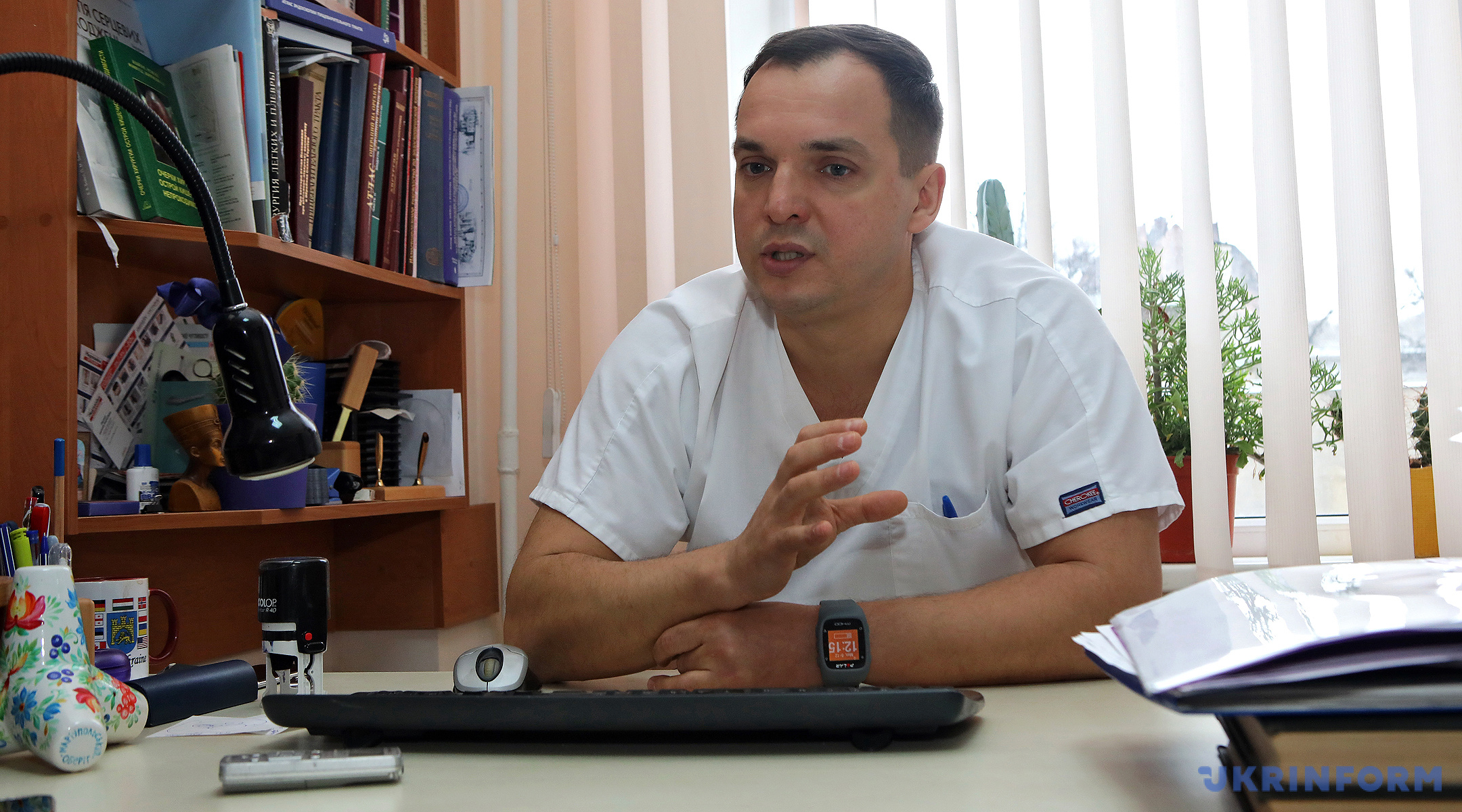
WHEN EVEN HIGH-END TECHNOLOGIES ARE POWERLESS...
- I am bound to ask. In autumn, the public was shocked by the death of commander of the 128th mountain infantry brigade Yevhen Korosteliov [on November 12, he and another officer tripped a land mine blast near the village of Novotroitske in Donetsk region while patrolling the advanced positions. Korosteliov died a week later, on November 19, in Kharkiv Hospital]. Why did the doctors fail to save him?
- It was a very serious injury as a result of a fairly powerful blast. He lost a part of his right lower limb and foot on his left limb. But that was not the cause of death. The main thing was a massive pulmonary concussion. You see, the lungs were so damaged in blast that they could not recover. Respiratory failure progressed gradually, increasing cardiovascular insufficiency... He ran a fever over the last two days – also of central origin, due to general trauma. During the week he was with us, we involved all possible experts – Kharkiv specialists, the acting chief anesthesiologist of the Ministry of Defense came from Kyiv. I will say the following: the fact that he survived up to our stage [up to delivery to Kharkiv] was the result of deep and systematic actions from the very beginning. There, at the front line, they were able to pull him out after that blast, to provide assistance in the Volnovakha town hospital, then they took a risk and decided to deliver him to our hospital by air. If not for a well-coordinated evacuation system, he would not have got to Kharkiv. However, our joint efforts did not provide the desired result. He got a fatal injury, unfortunately.
- Have there been other severe cases recently?
- Over the past six months, this is our second patient who died as a result of a very serious injury. The first one also had extremity avulsion, but the leading was a kidney injury sustained in battle... Doctors failed to save him. In general, we have received many seriously wounded patients and we already have the necessary experience in their treatment.
- The military also just falls ill as all people do. Why do soldiers go into the hospital from the front line?
- At the early stages of the war, when food and deployment systems were not adjusted, there were a lot of cases of pancreatitis, that is, there was no normal food, high-quality drinking water, plus alcohol consumption. There were up to 30 cases of acute pancreatic necrosis per year and huge sums of money were spent on treatment, sometimes UAH 600,000 per patient. But gradually, when the support system began to work, the number of such diseases decreased.
And we have the same picture as in civil life – gallstone diseases, appendicitis, hernias, obstructions, vascular diseases, osteochondrosis, joint diseases. And, unfortunately, cancer. This is a huge problem because such patients require not only surgical intervention but also an integrated approach. Cancer care in our country is provided on a territorial basis. That is, we must diagnose and quickly transfer soldiers to their native region, where they will receive chemotherapy and radiation therapy.
- Is psychological care provided in the hospital?
- Yes, it is provided. And this is a great help to a doctor of any discipline when a psychologist works with a patient. Patients do not always speak about everything that bothers them. And such a more confidential conversation with a psychologist has a positive effect. There are so many post-traumatic stress disorders. Psychologists communicate with almost all patients who come to us. And they solve problems, if necessary, together with psychiatrists and neuropathologists. Psychologists also communicate with relatives who come to visit the servicemen and women.
- In general, what are the material conditions in the hospital?
- The hospital develops, you see this. New windows, repair works in departments, beds are replaced with new ones, air conditioners are installed. We have received significant funds in recent years. The major overhaul is conducted in the surgical unit, and the next overhauls are planned in the intensive care unit and the emergency department. And we also get modern reanimation ambulance cars. We had two cars before the war, now we have eight. And what is very important: we can select and order the equipment that is necessary at our level of provision of assistance. We received the endoscopy towers I already mentioned exactly of the requested configuration. Medicines, materials – everything is ordered promptly. At the beginning of the war, volunteers helped us a lot. Today, the state takes the main charge.
Yulia Bayrachna, Kharkiv
Photo by Vyacheslav Madiyevsky
Photo by Vyacheslav Madiyevsky
